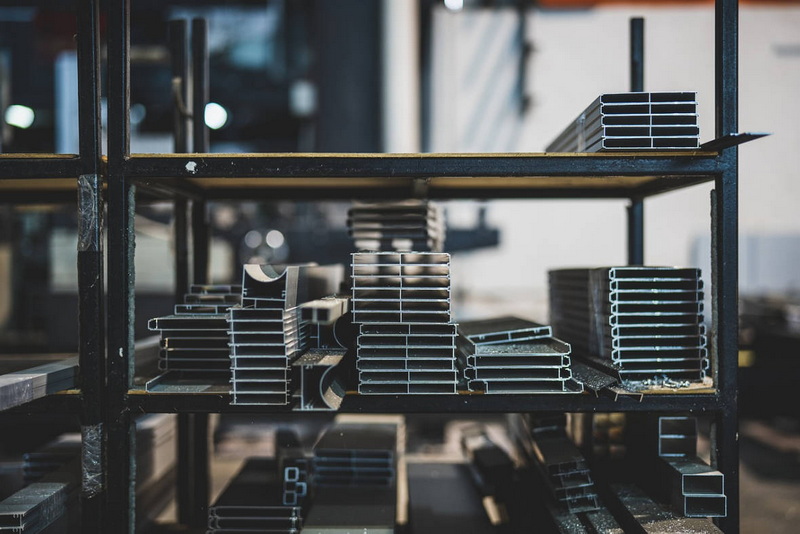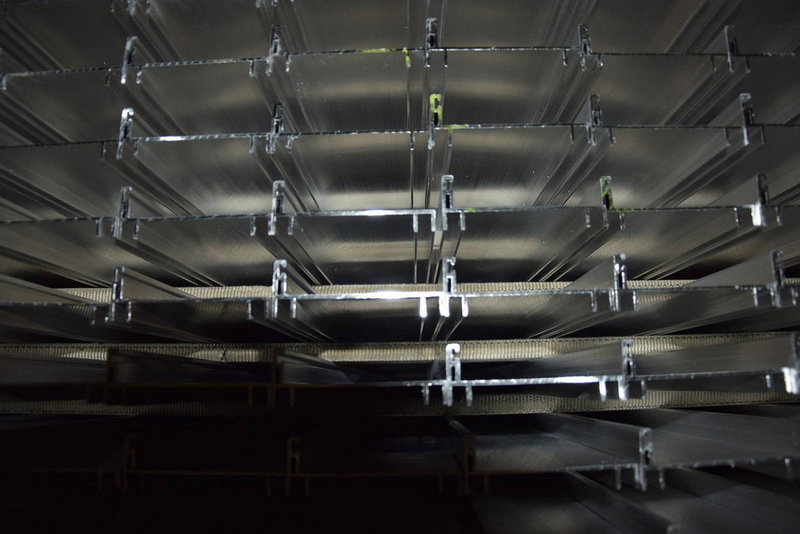English 




Views: 222 Author: Astin Publish Time: 2025-04-05 Origin: Site



Content Menu
● Introduction to Aluminum Angle Profiles
>> Key Dimensions and Specifications
● Applications of Aluminum Angle Profiles
>> Construction and Architecture
>> Furniture and Interior Design
>> Electronics and Retail Displays
>> DIY Projects
● Benefits of Using Aluminum Angle Profiles
● Choosing the Right Aluminum Angle Profile
● Standard Sizes of Aluminum Angle Profiles
● Customizing Aluminum Angle Profiles
● Working with Aluminum Angle Profiles
● FAQs
>> 1. What are the primary applications of aluminum angle profiles?
>> 2. What are the benefits of using aluminum angle profiles?
>> 3. How do I choose the right aluminum angle profile for my project?
>> 4. Can aluminum angle profiles be customized?
>> 5. What are the common standard sizes for aluminum angle profiles?
Choosing the right aluminum angle profile is crucial for ensuring the structural integrity, aesthetic appeal, and long-term performance of various projects across industries such as construction, manufacturing, and DIY endeavors. Aluminum angle profiles, known for their versatility and strength, are L-shaped extrusions that provide a unique combination of lightweight properties, corrosion resistance, and high strength-to-weight ratios. This article will guide you through the process of selecting the appropriate aluminum angle profile for your specific needs, exploring key considerations, applications, and benefits.

Aluminum angle profiles are widely used due to their ability to provide balanced support and structural reinforcement. They are available in two primary configurations: equal angles and unequal angles. Equal angles have legs of equal length, making them suitable for general-purpose applications where balanced support is required. Unequal angles, with legs of different lengths, are ideal for specialized applications that demand varying levels of support on each side.
When specifying aluminum angle profiles, several key dimensions must be considered:
- Leg Length: This refers to the length of each side of the angle. It is critical for determining the load-bearing capacity and structural support provided by the angle. Longer legs generally offer greater strength but at the cost of added weight.
- Thickness: Indicates the thickness of the aluminum material along the legs. Thicker angles provide greater strength and resistance to deformation but also increase weight.
- Corner Radii: These are the curved edges at the interior and exterior of the angle. Smaller radii provide sharper angles, while larger radii can reduce stress concentrations and increase strength.
Aluminum angle profiles are versatile and essential components in various industries:
- Structural Support: Aluminum angles are used in roof trusses, steel frameworks, and interior supports to ensure stability in both commercial and residential buildings.
- Decorative Elements: They are used for moldings, trims, and exterior corner details due to their aesthetic appeal and corrosion resistance.
- Frames and Supports: Aluminum angles are used to construct frames for furniture, providing lightweight yet strong support.
- Decorative Trims: They are used as decorative elements in interior design due to their sleek appearance and ease of maintenance.
- Component Support: Aluminum angles serve as supports for electronic components and retail display structures, offering stability and durability.
- Structural and Decorative Uses: Aluminum angles are popular in DIY projects for both structural reinforcement and decorative purposes due to their ease of use and versatility.
The benefits of using aluminum angle profiles include:
- High Strength-to-Weight Ratio: Aluminum angles provide excellent strength without adding unnecessary bulk, making them ideal for applications where weight is a concern.
- Corrosion Resistance: Aluminum naturally resists corrosion, making it suitable for outdoor and high-moisture environments.
- Versatility: Available in various sizes and alloys, aluminum angles can be adapted to meet specific design needs.
- Aesthetic Appeal: They offer a sleek appearance, making them suitable for decorative applications.
To select the right aluminum angle profile for your project, consider the following factors:
- Load and Stress Requirements: For heavy-duty applications, thicker angles with longer legs are often necessary to ensure sufficient load-bearing capacity.
- Environmental Conditions: Corrosion resistance is crucial for outdoor applications. Different alloys offer varying levels of protection.
- Alloy Type: Common grades include 6061, 6063, and 5052. Each offers different levels of strength and corrosion resistance.
- Standard vs. Custom Sizes: Standard sizes are cost-effective and readily available, but custom sizes may be necessary for specific design needs.

Aluminum angle profiles are manufactured in a range of standard sizes to meet various construction and industrial requirements. These standard sizes offer cost-effectiveness and quicker availability for common applications:
- Equal Angles: Standard equal angle sizes typically range from 0.5 inches to 8 inches for leg length, with thicknesses varying from 1/16 inch to 1/2 inch.
- Unequal Angles: Unequal angles come in a broader range of sizes to accommodate specific needs. Common sizes can range from 0.375 inches x 0.5 inches to 3 inches x 6 inches, with thicknesses between 1/8 inch to 1/4 inch.
Some common standard sizes for aluminum equal angle bars include:
Leg Length (mm) | Leg Length (mm) | Thickness (mm) |
10 | 10 | 1 to 2 |
12 | 12 | 1 to 2 |
15 | 15 | 1 to 3 |
20 | 20 | 1 to 4 |
25 | 25 | 1.5 to 4 |
30 | 30 | 1.5 to 5 |
35 | 35 | 1.5 to 4 |
40 | 40 | 1.5 to 4 |
45 | 45 | 2 to 3 |
50 | 50 | 2 to 5 |
Common standard sizes for aluminum unequal angle bars include:
Leg 1 Length (mm) | Leg 2 Length (mm) | Thickness (mm) |
10 | 5 | 1.5 |
12 | 3 or 6 | 1 to 1.2 |
15 | 10 | 1 to 2 |
19 | 11 | 2 |
20 | 10, 15, 18 | 1.5 to 3 |
22 | 12 | 2 |
25 | 10, 12, 15 | 1.5 to 3 |
30 | 10, 11, 12, 15 | 1.5 to 4 |
35 | 10, 15, 20, 25 | 1.5 to 4 |
40 | 10, 15, 20 | 2 to 4 |
50 | 20, 25, 30 | 1.5 to 3 |
60 | 30 or 40 | 2 to 4 |
For projects with unique requirements, custom aluminum angle profiles can be manufactured. Custom sizes allow for precise adaptation to specific design needs, ensuring optimal performance and material usage. However, custom sizes may involve higher costs and longer lead times compared to standard sizes.
Aluminum angles can be assembled using screws, rivets, or welding, depending on the application. For DIY projects, screws are often the most convenient option, providing easy disassembly if needed. In structural applications, welding may be necessary for added strength.
Cutting aluminum angles requires careful preparation and the right tools. For thinner profiles, hand shears or tin snips are effective, while thicker profiles may require power tools like miter saws or circular saws. Proper clamping and accurate marking are crucial for achieving clean cuts.
Selecting the right aluminum angle profile is essential for achieving optimal results in various projects. By understanding the applications, benefits, and key considerations for aluminum angles, professionals and hobbyists can ensure structural integrity, aesthetic appeal, and long-term performance. Whether using standard sizes for cost-effectiveness or custom sizes for specific design needs, aluminum angle profiles provide a reliable and adaptable solution for a wide range of applications.

Aluminum angle profiles are primarily used in construction, furniture, electronics, retail displays, DIY projects, and transportation. They serve as structural support, decorative elements, and components in electronic devices.
The benefits include high strength-to-weight ratios, corrosion resistance, versatility, and aesthetic appeal. These properties make aluminum angles ideal for both structural and decorative applications.
Consider the load and stress requirements, environmental conditions, alloy type, and whether a standard or custom size is needed. Ensure the selected profile aligns with regulatory standards and fabrication requirements.
Yes, aluminum angle profiles can be customized to meet specific design needs. Custom sizes allow for precise adaptation to ensure optimal performance and material usage.
Standard sizes vary, but equal angles typically range from 0.5 inches to 8 inches for leg length, with thicknesses from 1/16 inch to 1/2 inch. Unequal angles offer a broader range of sizes to accommodate specific needs.
[1] https://www.weiye-aluminium.com/what-are-the-standard-sizes-of-aluminum-profile-angle.html
[2] https://www.profall.com/en/aluminum-angle-sizes
[3] https://www.weiye-aluminium.com/what-are-the-best-uses-for-aluminum-angle-profiles.html
[4] https://www.mgmetals.co.uk/how-to-choose-the-right-aluminium-angle-for-your-project/
[5] https://www.alu-haomei.com/article/aluminum-angle-size-specifications-guide.html
[6] https://onlinemetalsupply.com/blog/guide-to-aluminum-angle-/
[7] https://www.jagdishmetalindia.com/blog/everything-you-need-to-know-about-aluminium-angle/
[8] https://www.otalum.com/application-and-types-of-aluminum-angle-profiles.html
[9] https://www.chaluminium.com/how-to-choose-the-right-aluminum-profiles
[10] https://steelnow.com/blog/aluminum-angles-what-size-is-right
[11] https://www.capral.com.au/extrusion-plate-sheet/extrusion/angles-geometrics/angles/
[12] https://www.khetangroup.net/blog-post/the-ultimate-checklist-for-choosing-aluminum-profiles/
[13] https://store.boschrexroth.com/Assembly-Technology/Basic-mechanic-elements/Profiles-and-accessories/Al-angle-profile-19/ALUMINUM-ANGLE-PROFILE_3842557254?cclcl=en_DE&sfdcIFrameOrigin=null
[14] https://www.goldapple-alu.com/how-to-choose-the-best-polished-aluminum-angle-for-your-project.html
[15] https://www.chaluminium.com/aluminium-section-size-a-guide-to-measurement-and-choose
[16] https://jmaluminium.com/selecting-right-aluminium-profiles/
[17] https://www.premiumparts.com/blog/7-factors-to-consider-in-aluminium-profile-selection
[18] https://www.aluminiumwarehouse.co.uk/blogs/news/why-are-aluminium-angle-profiles-important
[19] https://www.goldapple-alu.com/how-to-choose-the-right-polished-aluminum-angle-for-your-application.html
[20] https://www.aluminium-online.co.uk/aluminium/aluminium-angle/equal-angle/
[21] https://www.china-me.com/news/article/aluminum-profiles-selection-and-knowledge
[22] https://www.ryerson.com/metal-resources/metal-market-intelligence/5-questions-on-aluminum-extrusions
[23] https://www.reddit.com/r/simracing/comments/14hnk7y/some_questions_about_aluminum_profile_rigs/
[24] https://endura-steel.com/guide-to-aluminum-angles/
[25] https://www.smetals.co.uk/what-can-aluminium-angle-be-used-for/
[26] https://edmolimited.co.uk/education/frequently-asked-questions/aluminium-extrusion/
[27] https://www.minalex.com/2021/10/29/10-questions-ask-aluminum-extruder/
[28] https://www.profall.com/en/what-is-an-aluminum-profile
[29] https://www.aluminiumprofilesraesa.com/en/50728/FAQ.htm
[30] https://www.sixaluminium.com/how-to-choose-the-right-aluminum-u-profile-for-your-project/
[31] https://blog.naviewaluminium.com/blogs/aluminum-angle-profiles-key-considerations-for-choosing-the-right-material-for-your-project/
Aluminum Profile Extrusion: Mechanical Properties, Alloy Types, and Temper Differences
Aluminum Profiles in Electronics: Enhancing Durability and Heat Management
Exploring Structural Aluminum Profiles: Strength Meets Lightweight Design
The Role of Aluminum Profiles in Solar Panel Frame Construction
Aluminum Profiles for Heat Dissipation: What You Need to Know
Understanding the Advantages of T-Slot Aluminum Profiles in Manufacturing
Top Aluminum Profiles Manufacturers and Suppliers in Austria
